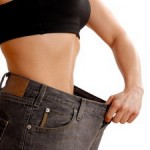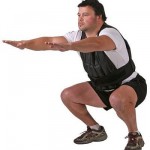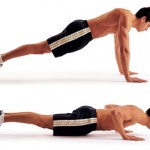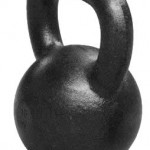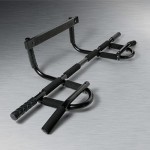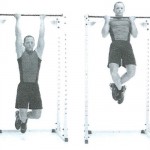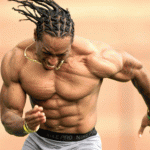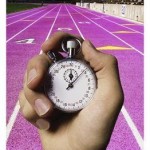Welcome back:
This week we’re going to look at three special B-Group Vitamins that compliment your fat-loss quest, while keeping you healthy and strong.
Losing body fat is a bit like fighting a war – you need the right strategy the right weapons and the right troops plus the will to overcome if you are going to win.
To win the war against excess body fat, the B-Group Vitamins should be amongst your 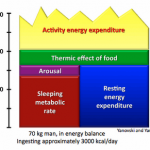 best friends and a part of your arsenal. They’re a vital component of nutrition that enables your body to turn food into energy.
best friends and a part of your arsenal. They’re a vital component of nutrition that enables your body to turn food into energy.
It is easier to work out and to exercise your will power when you are full of energy – without the B-group Vitamins your energy levels will be low and your ability to recondition your metabolism and to withstand temptation will fall. This in turn will make your fat-shedding efforts so much the harder…
There are three (3) main B vitamins that I want focus on. Individually they are important to your health – when used together they keep you strong, healthy, energised and compliment your fat loss efforts.
But first – What are B-Group vitamins exactly?
The B-Group Vitamins
The B-Group Vitamins are water-soluble vitamins. This simply means that they once they are processed by your body any excess is excreted in your urine.
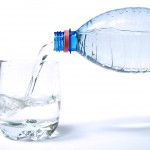 Overdosing on B-Group is rarely an issue…
Overdosing on B-Group is rarely an issue…
This also means that they are quickly depleted in situations of high sweat loss and activity. Because water-soluble vitamins are not stored in the body in appreciable amounts and are used up and depleted rapidly, it’s important that you ensure that you are getting enough of them by eating foods that are rich in these vitamins or by taking a supplement to make sure that you have adequate levels in your system.
I recommend that you do both.
Drinking alcohol also increases the need for the B-Group Vitamins so after a heavy session of ‘glass raising’ taking a B supplement before hitting the sack is always a good idea. It’s even better if sleep is followed by another Vitamin B Group tab or 2 upon rising the next morning.
There are eight B-vitamins, which include thiamine (B1), riboflavin (B2), niacin (B3), pyridoxine (B6), folic acid (B9), cyanocobalamin (B12), pantothenic acid and biotin.
These vitamins act as coenzymes and as catalysts in the chemical reactions that transfer energy from the food we eat to our body systems.
They are essential for the breakdown of the macronutrients(Carbs to glucose,
 Hangover – alcohol increases your Vitamin B needs – a lot!!
Hangover – alcohol increases your Vitamin B needs – a lot!!
proteins & fats to a number of elements essential for the repair and maintenance, growth, normal functioning of our nervous system and healthy hair, skin and nails. You need to be getting B-group Vitamins everyday – without them you’ll ail.
Several of these B-Group Vitamins are especially important to having a fast (ie fat burning) metabolism and by extension a leaner, fitter body.
Pyridoxine: Vitamin B6
Vitamin B6 has three chemical forms (as pyridoxine, pyridoxal, and pyridoxamine) and is the B-group Vitamin most necessary for proper protein metabolism. The coenzyme form of B6 is associated with more than 100 other enzymes which are critical for amino acid breakdown from protein foods and the conversion of certain amino acids from one type to another.
Amino acids as you know are essentially the body’s building blocks and are a necessary part of tissue repair, muscle growth, nerve sheaths, nails, hair etc etc.
B6 also helps your body to access and use the glycogen in your muscle cells for energy when you are moving and especially when you are working out. No glycogen = no movement.
 If you’re not sleeping then your B-Group needs go up!!
If you’re not sleeping then your B-Group needs go up!!
Also the breakdown of glycogen plays an important part in the regulation of blood sugar levels (blood sugar is stored as glycogen in the muscles and liver but once these areas are full the excess is stored as body fat!).
Another important function of B6 is its ability to diminish the actions of hormones such as cortisol – the stress hormone. As we’ve previously explored on this blog when you’re under stress your body releases lots of cortisol which does a number of negative things primarily for our discussion – it promotes the storage of belly fat. It also promotes the breakdown & use of muscle tissue as fuel.
Great double whammy – you store more fat and lose muscle so your metabolism slows even further…
Adequate B6 levels are critical in times of stress (bad stress like job, money or relationship worries or even good stress like exercise) so your body does not store extra body fat and use precious muscle protein for energy.
Because B6 is so important for protein metabolism, it’s requirement depends on the
 B-group helps you feel like this!!
B-group helps you feel like this!!
amount of protein you consume on a daily basis. An intake of about 1.6 mg of B6 for every 100 g of protein is considered by the National Academy of Sciences to meet the needs of adults under normal conditions .
However, for athletes and people that exercise regularly (and often eat more protein), their vitamin B6 requirements will be higher given the greater need for energy and protein metabolism. Scientific studies have shown that exercise greatly depletes B6 levels in the body and needs to be kept in check through supplementation.
As you can see, when you’re an active person consuming more protein than the” Average Westerner”, your needs for vitamin B6 are increased, and it’s critical you get at least the minimum amount in each day.
Some of your best food sources of B6 include fortified cereals, potatoes, bananas, chickpeas and chicken (contains ~ 0.5-0.7 mg), but even if you are eating those foods you’d be wise to take a B-Group supplement.
Cobalamins: Vitamin B12.
What we call Vitamin B12 is actually a collection of compounds that are different molecules all containing the element cobalt. The most common form is the B12 vitamin known as cyanocobalamin.
The various forms of B12 work in the body to maintain normal brain and nervous system development and function, and play a role in influencing DNA synthesis and regulation.
B12 also plays an important role in the metabolism of fatty acids and creation of energy from foods containing fats.
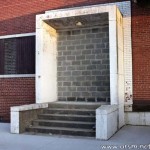 You’ll hit the wall without enough B-Group Vitamins in your system…
You’ll hit the wall without enough B-Group Vitamins in your system…
People with insufficient B12 in their diet suffer fatigue, depression, and can develop poor memory. In severe cases cracks may form in the corner of their mouth ( a condition known as angular cheilitis).
The cause of this tiredness and skin damage is related in part to B12’s role in red blood cell production which is necessary to carry oxygen and iron through the body. Because of this B12 is important in assisting the prevention of anaemia.
Athletes and hard exercisers may have low body B12 status, due to their increased metabolism and the raised demand for this vitamin to be used repair damaged blood cells and injured muscle tissue; and to carry more oxygen around in the blood while exercising.
This means that if you are working out regularly and hard then you will need more than the average daily allowance of ~2.4 mcg/day.
Vitamin B12 is only found in animal based foods so vegetarians – especially vegans – are
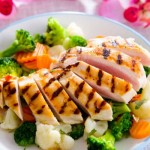 Good B6 Source – Chicken!!
Good B6 Source – Chicken!!
at risk of developing the above mentioned symptoms of deficiency unless they supplement their dietary income.
The foods highest in B12 are shellfish (mussels, lobster), oily fish (trout, salmon, tuna), and organ meats (liver).
Biotin
Biotin is an essential cofactor for several key enzymes in the production of glucose (& glycogen) and the metabolism of fats and proteins. For example, in order for the liver to make glucose (through a process called gluconeogenesis), an enzyme essential to this process called pyruvate carboxylase requires biotin in order to function correctly. No biotin no liver produced glucose…
Biotin is also needed for the breakdown of the branch chain amino acids from protein (leucine, isoleucine and valine), and some fatty acids from fat-containing foods.
 B-Group Vitamins help when you’re stressed…
B-Group Vitamins help when you’re stressed…
People who exercise often have an increased need for biotin for several reasons:
• Increased metabolism resulting in the loss of this vitamin in urine or sweat
• Increased mitochondrial enzymes that require more biotin for cofactors
• Increased need for tissue repair and maintenance
• Increased food intake requiring biotin for metabolism
The richest source of Biotin is cooked eggs (Forget the ‘Rocky’ raw egg eating – raw egg whites bind biotin due to the protein avidin). Although the average daily allowance is set at least 30 mcg of biotin each day, there is no toxicity associated from higher intakes, especially in people who are active.
B-Group Vitamins = Good Health
As you can see, ideal intake of these B-Group Vitamins helps gives your body the energy
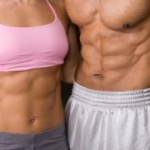 B-Group Vitamins help you look like this…
B-Group Vitamins help you look like this…
to exercise hard, so that you can burn more fat and build more lean muscle. If you’re constantly tired because your metabolism is sluggish, if you can’t create the right energy from the food you eat then you’ll be unable to rid your body of excess body fat or achieve a lean, strong physique. So, make sure that you get plenty of these simple but potent vitamins via eating unprocessed foods and topping up with a supplement.
If you do so then your body will lose fat, your metabolism will run better and your overall health will improve.
See you next week.

